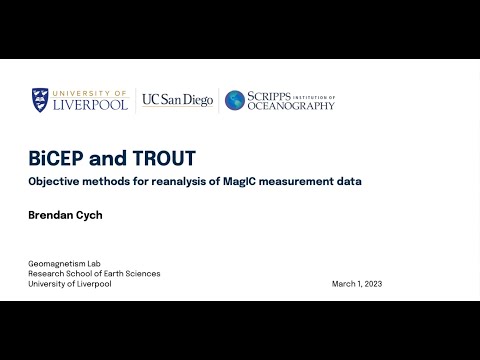Description:
Save Big on Coursera Plus. 7,000+ courses at $160 off. Limited Time Only!
Grab it
Explore objective methods for reanalyzing MagIC measurement data in this 42-minute conference talk by Brendan Cych from the University of Liverpool. Presented at the 2023 Magnetics Information Consortium (MagIC) Workshop, the talk introduces two statistical approaches: BiCEP (Bias Corrected Estimation of Paleointensity) and TROUT (Thermal Resolution of Unblocking Temperatures). Learn how these methods can be applied to legacy paleomagnetic data, particularly for samples with non-ideal magnetic recorders. Discover how BiCEP provides unbiased paleointensity estimates and statistically robust error bars, while TROUT offers automated analysis of multi-component demagnetization data. Gain insights into the challenges of interpreting paleomagnetic data and the potential for these new methods to improve our understanding of Earth's core dynamics and plate tectonics over geological timescales.

BiCEP and TROUT: Objective Methods for Reanalysis of MagIC Measurement Data
Add to list
#Science
#Earth Science
#Paleomagnetism
#Programming
#Programming Languages
#Bicep
#Mathematics
#Statistics & Probability
#Statistical Analysis
#Geophysics